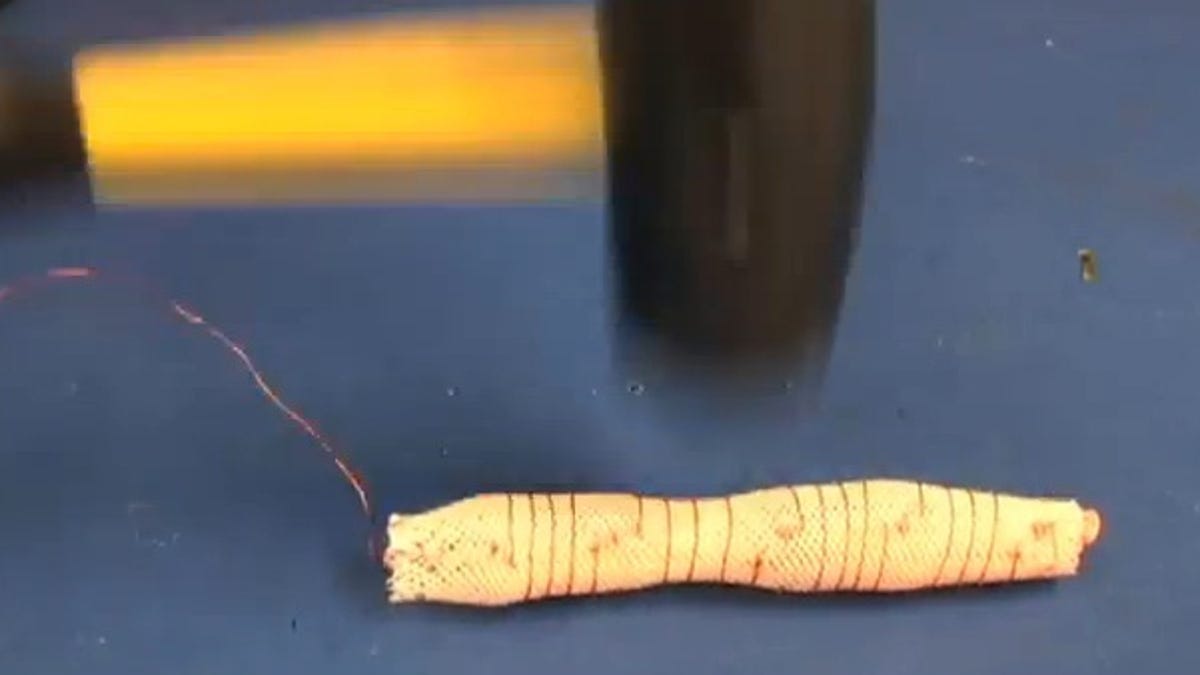Robot worm laughs off your attempts to squash it dead
It wriggles, it writhes, it explores your insides! The hardy Meshworm crawls like the real thing and could take on military tasks.

From snakes to fish to cheetahs, we've seen a veritable Noah's Ark of biomimetic robots in recent years, and now researchers have turned to the lowly earthworm for inspiration.
Meshworm is a squishy, sluglike droid that stretches and squeezes its artificial muscles to move forward. This peristalsis is similar to how worms travel and how your guts move food around.
Researchers at Harvard University, MIT, and Seoul National University say Meshworm could squeeze its way into tight spaces and over uneven terrain. Natch, the research is funded by DARPA, so there are potential military apps. Robo-slug spies, perhaps?
The crawler could also have medical applications, such as implants, endoscopes, and prosthetics.
But one of its most remarkable features is that it can take quite a beating. As seen in the video below, researchers stepped on it and even took a hammer to it, but Meshworm inched away unscathed.
Meshworm's locomotion is the product of an interesting bit of engineering, described in the journal IEEE/ASME Transactions on Mechatronics.
The machine is an artificial muscle made up of a polymer mesh tube wrapped with nickel-titanium wire. It runs on an internal battery and circuit board.
When a small electric current is applied to parts of the wire, it heats up, making the wire pliable but only enough so that it returns to its original shape after bending.
The researchers developed algorithms that control the heating or cooling to parts of the wire, in effect directing the motion of the worm. Meanwhile, wires that run the length of the worm make it go left or right with temperature changes.
Meshworm is simple compared with a real worm, but the technology could see widespread use even in consumer electronics, MIT quoted Lewis & Clark College biology professor Kellar Autumn as saying.
"I predict that in the next decade we will see shape-changing artificial muscles in many products, such as mobile phones, portable computers, and automobiles," Autumn said.
Now who wouldn't love to hammer all the above?

